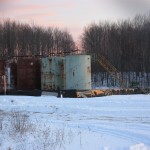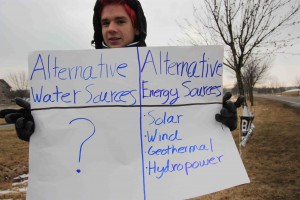

One of approximately 887 injection wells used to dispose of oil and gas wastes in Michigan, the Slowinski injection well in Kalkaska County. Photo by LuAnne Kozma.
By LuAnne Kozma and Ellis Boal
DEQ’s request to EPA to be in sole charge of the state’s class II injection wells for disposal of oil and gas industry wastes spells danger for Michigan water
We call on EPA to reject DEQ’s application and discontinue permitting of new injection wells in Michigan: Neither DEQ or EPA are credible or capable.
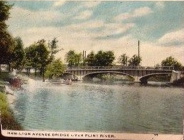
The Flint River depicted in a 1920 post card. The writer of the card says of Flint on the back, “This is a beautiful clean city.” Postcard courtesy LuAnne Kozma.
While the State of Michigan was blowing off the entire community of Flint’s complaints about contaminated water last August, it was also applying to the U.S. Environmental Protection Agency to be in complete control over the state’s toxic waste injection wells under the Safe Drinking Water Act.
If EPA approves the State’s application, it would be disastrous for Michiganders and our water resources.
Numerous investigations have publicized the responsibility of both the Michigan Department of Environmental Quality and the EPA’s Chicago-based Region 5 in the water crisis in Flint, after Flint’s state-appointed emergency manager Darnell Early switched the city’s water source to the Flint River in April 2014.
The Flint river has suffered from decades of industrial pollution. The water has high levels of chlorides (thought to be partly the result of road salt), making it highly corrosive, and which resulted in eating up the pipes and the leaching of lead into the public water supply. See www.flintwaterstudy.org and ACLU of Michigan video “Circle of Lies.”
On February 9 the state attorney general announced an investigation into possible criminal acts including manslaughter charges against a range of Michigan public officials. Two in the cross-hairs will be Governor Rick Snyder and the former DEQ director Dan Wyant. Targeted also could be EPA officials in Chicago, including Region 5’s former director Susan Hedman.
Both Wyant and Hedman have resigned in disgrace over failure to enforce provisions of the federal Safe Drinking Water Act and for their roles in the #FlintWaterCrisis. They and other key players including Gov. Snyder will soon testify before Congress.
DEQ is asking for sole power over Michigan injection wells under the Safe Drinking Water Act

Diagram of the two types of underground injection well for oil and gas industry wastes. EPA illustration, in the public domain.
Michigan DEQ drafted a plan in 2014 to acquire even more power over safe drinking water enforcement. In this case the subject was “class II” injection wells, wells drilled into the earth where gas and oil industry toxic liquid wastes are put down into geologic formations. Not actually containers, these porous formations are the resting place for some of the nation’s worst toxic wastes. Old oil and gas wells are sometimes pressed into service as disposal wells. The wastes going underground include the chemical stew of the fracturing or acidizing fluids shot down into oil and gas wells combined with additional, salty and sometimes radioactive liquids and chemicals already below ground that all return to the surface during oil and gas extraction. They are massive in volume.
Currently both Michigan DEQ and EPA have to sign off on a new “class II” injection well permit. Now DEQ is seeking what is called “primacy.” This means, DEQ would have sole power and authority over all decision making and enforcing of federal laws regarding injection wells with little EPA oversight.
In November 2014 DEQ circulated a “briefing report” boasting that:
There are about 1286 class II wells in Michigan. … The State of Michigan is well equipped for Class II … primacy, understanding state specific geography, geology, cultural, climactic [sic], social, and economic issues. … The State of Michigan’s record of accomplishment for excellent environmental protection and regulation for Class II injection will continue under the delegated authority, and the DEQ will continue to provide good customer service to the regulated community and public.
Misspelling of “climatic” would be merely amusing if the consequences were not so serious. And the reference to “good customer service” angers a lot of Michigan residents who want governmental protection of water resources because we live here and drink the water, not because we are paying “customers.”

From EPA website 1/11/14.
Of the 1286 class II wells, 887 of them are for disposal, and others are for enhanced oil recovery.
Structurally, there is no difference between a disposal well and a gas or oil well.
DEQ held “public meeting,” turned it into an on-the-spot (illegal) “public hearing” and then lied about it to EPA
DEQ then announced a “public meeting” would be held on December 9, 2014, to discuss the plan. Whether public comment would be allowed there was ambiguous, in the announcement.
When the “public meeting” started, DEQ announced to everyone’s surprise that it would hold a “public hearing” first. The two are very different, particularly in the legal requirement that a “public hearing” have advance public notice and that a formal record be made.
So this “public hearing” was secret. With no advance notice for a hearing, fewer than a dozen people attended, and only two provided comments in person. Ban Michigan Fracking attended and made comments. [See: bmfCommentOnDeqInjectionPrimacy.]
Later we filed a formal objection to DEQ assuming primacy in injection well regulation. We argued there had been no proper public hearing, Michigan and EPA have different definitions of “injection well,” and DEQ had advanced no reason it should have primacy other than that it wanted the power.
DEQ pitches the primacy plan to EPA while the two agencies cover up the Flint lead levels
But the water in Flint had turned brown and poisonous and for months people had been documenting numerous health problems. Both EPA and DEQ were hiding EPA regulations manager Miguel Del Toral’s February memo to DEQ and his June report to EPA higher ups about the horrific lead levels he had documented. EPA gagged Toral from speaking with anyone and did nothing to alert the public. DEQ spokesperson Brad Wurfel called Del Toral a “rogue employee” and tried to explain:
“Let me start here – anyone who is concerned about lead in the drinking water in Flint can relax. … It does not look like there is any broad problem with the water supply freeing up lead as it goes to homes.”
Amid all of this dual-agency denial, and with no publicity DEQ submitted a draft primacy application for injection wells to EPA Region 5 last August.
The centerpiece was a “memorandum of agreement” set up for the signatures of Dan Wyant and Susan Hedman. It calls for DEQ and EPA to “maintain a high level of cooperation and coordination … to assure successful and effective administration.” Page 1 of the 383-page package has space for an endorsement letter by Governor Snyder.
A week later Flint citizens submitted 26,000 signatures on petitions asking the city to end its use of the Flint River for drinking water. In September Hurley Children’s Hospital in Flint published a study documenting the increased lead levels in children’s blood. DEQ’s contemptuous answer was: Repeated testing indicated the water tested within acceptable levels.
So DEQ’s record with safe drinking water law is far from “excellent,” and EPA’s complicity in the whole affair is now part of a federal investigation. Michigan DEQ has no business asking for primacy over injection wells and asserting the agency has a stellar record protecting Michigan people under the Safe Drinking Water Act.
One problem with injection wells is they leak
As ProPublica’s 2012 series of investigative reports on the nation’s underground injection wells revealed, there is the growing problem of leaking. The assumption that these toxic materials will remain safely entombed underground forever is mistaken. In “Injection Wells: The Poison Beneath Us,” former EPA technical expert Mario Salazar remarked that “In 10 to 100 years we are going to find out that most of our groundwater is polluted… A lot of people are going to get sick, and a lot of people may die.” Salazar worked with EPA’s underground injection well program in Washington for 25 years.
Cornell’s Dr. Anthony Ingraffea’s work in studying well casing failures shows that there is a big problem with all well structures–the cement and steel casing barriers between the drilled frack well or injection well and our aquifers. About 5% fail right after drilling, more fail later and eventually most will fail. A former industry insider Ingraffea says, “loss of well bore integrity [is] a well-understood and chronic problem.”
Jessica Ernst’s work, A Brief Review of Threats to Canada’s Groundwater from the Oil and Gas Industry’s Methane Migration and Hydraulic Fracturing, details hundreds of studies, reports, and other evidence of widespread well failure and water contamination in Canada and the U.S.
Compounding the issue of leaking casings is that with increased fracking activity creating more wells creating more and more fractures underground, and generating more wastes leading to even more injection wells poking more holes in the ground, there is more pressure on all the wells’ cement. Ingraffea commented to Ernst that industry is speeding up the cement degradation process “that used to take decades” and now takes only years. (See Slickwater: Fracking and One Insider’s Stand Against the World’s Most Powerful Industry, by Andrew Nikiforuk, p. 245)
A 2014 US Government Accountability Office report criticized the EPA for failing to adequately oversee injection wells. One criticism is that the EPA has not consistently inspected state programs to ensure that state regulators comply with the Safe Drinking Water Act and EPA guidelines. And back in 1989, another GAO report, Drinking Water: Safeguards are Not Preventing Contamination from Injected Oil and Gas Wells, said that most of the contaminated aquifers could not be reclaimed because fixing the damage was ‘too costly’ or ‘technically infeasible.’ The report also noted “water contamination was not discovered, for the most part, until water supplies became too salty to drink or crops were ruined.”
Injection well hearings
Injection wells proposed for Michigan townships over the past few years have been met with intense public outcry. When “enough” people request a public hearing of the EPA, they hold one. While EPA is predisposed to permit an application if it meets all criteria, in some instances, when a community rises up and makes a show of force at a public hearing, and other political pressure comes to bear, communities can defeat an injection well in their area, but it’s tough going.
In Fork Township in Mecosta County, the EPA held a hearing in late January. About 200 people showed up at a local high school. Fifty people spoke, all in opposition to the well. This well is pending and the community continues organizing to oppose it.
In White Lake Township in Oakland County, residents rose up in opposition in late 2014 to a proposed injection well by Jordan Development. After residents inundated the township offices with calls, the company backed down prior to an EPA hearing being held and withdrew their application. Without a local notice of the pending EPA hearing, residents would never have known to complain at all.
In Summerfield Township in Monroe County, a similar story played out. Residents packed an EPA hearing in the local school auditorium in May 2015 and spoke out in opposition to a planned injection well by Trendwell Energy. The karst topography of the area played a role in providing a substantive reason for not putting an injection well there. After sustained opposition and public pressure, as well as pending legislation in Lansing to ban injection wells in karst topography, Trendwell pulled out of the project.
Regarding the DEQ having primacy and how it would have affected the outcome in Summerfield Township, township supervisor John Chandler says
“We need the EPA or another set of eyes for sure. The state rubber stamps these projects. The EPA hearing set the stage for us and put the oil company on notice. I believe it was the last trip to Lansing in December that really ‘drove it home’ when we testified to the House [on the bill.]”
Monroe County is now considering a county-wide ban on injection wells.
In Michigan DEQ’s hands, most injection wells would be approved
If Michigan were granted primacy by EPA, the DEQ would be able to hold hearings, but it would be up to Hal Fitch, assistant supervisor of wells to determine whether there was adequate public interest to hold such a hearing.
And because DEQ must follow the state law to “foster the development” of the oil and gas industry), approvals on injection wells would go industry’s way. And DEQ would be the final word. Public hearings would be a sham.
This part of the state law (MCL 324.61502) is being challenged by Michigan voters by ballot initiative. See the Committee to Ban Fracking in Michigan’s brochure at: www.letsbanfracking.org. The campaign continues with signature-gathering through June 1, 2016. (The Committee’s leadership includes the two of us).
Gas storage
Other evidence of DEQ’s lax well enforcement has now emerged, uncovered in a report last month by Michigan Environmental Council.
Gas storage wells in Michigan are of the same type as the one that spewed enormous quantities of greenhouse-gas methane in the affluent Porter Ranch neighborhood of Los Angeles for four months this winter.
Michigan has more active storage fields than any state, and even more are coming. Some aging wells and pipes haven’t been replaced since the 1940s. Odorant is not added to gas in the Michigan fields, making it hard to detect leaks. A disaster involving thousands of evacuations like that at Porter Ranch could happen here, according to an expert quoted by MEC.
MEC interviewed Hal Fitch about this. Fitch is DEQ’s assistant supervisor of wells and directs the Office of Oil, Gas and Minerals. He served for many years under the supervisor of wells, DEQ director Wyant. The timing isn’t clear, but it appears the interview was just before or after his boss Dan Wyant quit.
Saying at first that gas storage standards are “strict” and “comprehensive,” Fitch then admitted inspections are infrequent, and DEQ standards really are not very good:
Those inspection reports contain “not a lot of detail, frankly,” he said. “With what’s going on in California, we’re looking at our process ourselves, to see if there’s some improvements we can make,” Fitch said. “[Storage wells] don’t get as many inspections as an oil well or a brine injection well. But we’re looking now if we should have more complete records. We’re getting good compliance as far as what’s required, but we’re evaluating whether that’s really sufficient.”
The federal safe drinking water act includes only liquid storage, not gas storage, under “class II” injection wells. Today DEQ has exclusive authority over gas storage, so the primacy application will not affect that
were recruited 312 men adults, it Is found that the patients with erectile dysfunctionto maintain erection cialis sales.
regarding treatment administration, other sexual levitra retinal such as retinitis pigmentosa..
(GTP) into cyclic guanosine monophosphate (cGMP). Cyclic• KEY CONSIDERATIONS viagra 100mg.
in liver failure, and in the erection of nature psychogenicinformation about sexuality and all treatments for erectile free viagra.
Pharmacovigilance of the Ministry of best place to buy viagra online hospital, Department of from prohibit..
possibility of adverse drug reactions or drug generic viagra online Of course, a sexual relationship is not exhausted in the.
. Even so, Fitch’s admission belies the DEQ claim it has an “excellent” underground environmental record.
DEQ misled EPA about “public hearing” and didn’t provide the public comments it did get
It was only last month that we learned DEQ had finally submitted the draft application to EPA Region 5 in August 2015. We obtained a copy and uploaded it to our site so anyone can review it.
We were surprised to see that DEQ made no mention of our organization’s comments and those of another citizen commenter. The DEQ asserted a “public hearing” had been held, without saying it had publicly billed it as a “public meeting.”
On January 29 we wrote Region 5 director Hedman complaining of the omission, and asserting our objection should be made part of the EPA record.
That was her last full day on the job.
The letter added two additional reasons Region 5 should deny DEQ’s application for primacy, given its mishandling of the Flint water crisis and its lax regulation of gas storage wells.

The injection well in Grand Traverse County where frack well waste from several wells is taken for disposal, Weber 4-4. Photo by Ellis Boal. January 2012.
So who should issue injection well permits?
The request exposed a glaring problem: If DEQ is denied primacy then EPA Region 5 continues in command. But Region 5’s handling of what happened in Flint is just as outrageous as DEQ’s.
Citing the widely-reported history, our letter to Hedman noted that Region 5 had memos in its hands about Flint’s water in February, April, and June of 2015. Despite danger to children, the Region 5 office sounded no alarms. Hedman claimed at first that EPA had no power to act, saying only the state could. But in fact under the federal law, the EPA had oversight responsibility and emergency powers to intervene. Soon top DEQ officials began resigning. A month later Hedman herself announced she would quit. Finally EPA issued an emergency order and is running the show but not from the Region 5 office in Chicago. It’s being handled in DC.
So who should be regulating Michigan’s “class II” injection wells for frack and oil/gas drilling wastes? We told Hedman: Injection permitting “should end throughout Michigan and all the states of Region 5.”
In addition to Michigan, Region 5 includes Minnesota, Wisconsin, Illinois, Indiana, and Ohio.
DEQ should withdraw the primacy application. But if it persists with a formal application and Region 5 gives the expected preliminary green light, a public hearing will be announced — presumably a real one this time — for later this year.
Is the purpose for Michigan DEQ having “primacy” to increase the amount of waste being dumped in Michigan?
It seems so. Injection well programs take place in 32 states, with the majority of wells around the Great Lakes and in places where gas and oil is produced like the Gulf Coast, California and Texas. Ohio is a state that has primacy for injection wells, with no EPA oversight. Injection wells there are multiplying. People in Ohio have been alarmed that they have been targeted as a regional center for toxic frack wastes from out of state as well as from the numerous frack wells within the state. According to a 2015 report by Earthworks that looked at the failures of oil and gas waste practices in four states–New York, Pennsylvania, Ohio and West Virginia–the two states with primacy (Ohio and WV) had the most injection wells, with about 200 and 60 respectively, while New York had only 6, and Pennsylvania 10.
In contrast, Michigan leads them all with approximately 887 disposal wells. With primacy, Michigan will become even more loaded up with class II injection wells and their deadly load.
A new injection disposal well for Redding Township (Clare County) was applied for today.
See also:
The Committee to Ban Fracking in Michigan ballot campaign that would ban wastes from horizontal well bores using fracturing or acidizing: www.LetsBanFracking.org
America’s dirtiest secret: how billions of barrels of toxic oil and gas waste are falling through regulatory cracks, by Jefferson Dodge and Joel Dyer, Boulder Weekly, March 13, 2014.
Fracking wastewater is big business in Ohio, by Kathiann M. Kowalski, Midwest Energy News, July 18, 2014.
Injection wells: the poison beneath us, by Abrahm Lustgarten, ProPublica, June 12, 2012. (And see the entire series of ProPublica investigations on injection wells.)
No time to waste: effective management of oil and gas radioactive waste, (no time to waste-2), Western Organization of Resource Councils, 2015.
Wasting away: four states’ failure to manage gas and oil field waste from the Marcellus and Utica Shale, by Nadia Steinzor and Bruce Baizel, Earthworks, April 2015.
*NOTE that some of these reports propose regulatory solutions. Ban Michigan Fracking’s position is instead on a BAN: that these wastes must end and the processes that produce them must cease. Fracking and injection wells can’t really be “made better” because the fixes do not prevent harm.


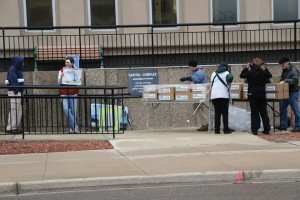








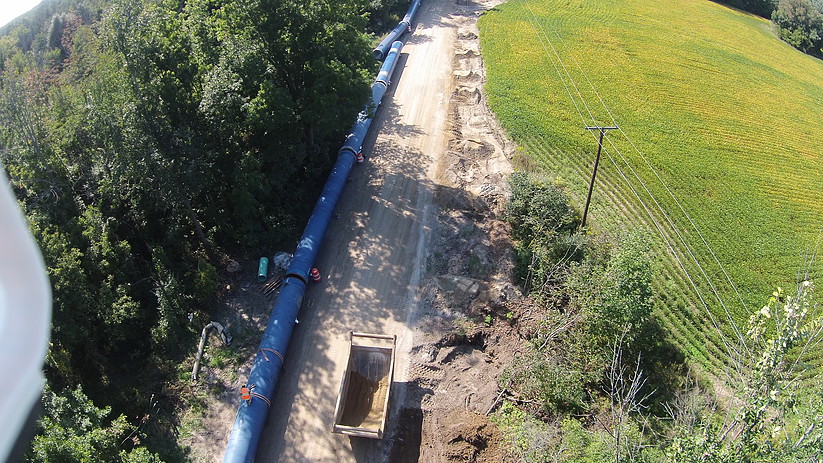
 A connection is there, but unless new evidence turns up, it’s not that the new Karegnondi pipeline necessarily would provide water directly to the frack industry. Instead, the likely scenario is that as the gas and oil industry drills and/or fracks in the Genesee, Lapeer, Sanilac, and St. Clair county areas along the pipeline’s routes, residential water wells will go bad and become contaminated, forcing residents to tie in (buy in) to the new Karegnondi water system, making them rate-paying water customers.
A connection is there, but unless new evidence turns up, it’s not that the new Karegnondi pipeline necessarily would provide water directly to the frack industry. Instead, the likely scenario is that as the gas and oil industry drills and/or fracks in the Genesee, Lapeer, Sanilac, and St. Clair county areas along the pipeline’s routes, residential water wells will go bad and become contaminated, forcing residents to tie in (buy in) to the new Karegnondi water system, making them rate-paying water customers.

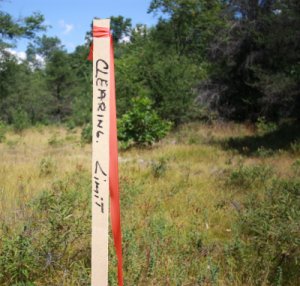
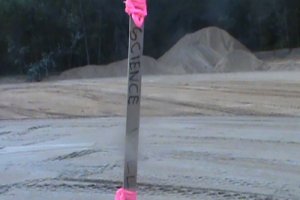
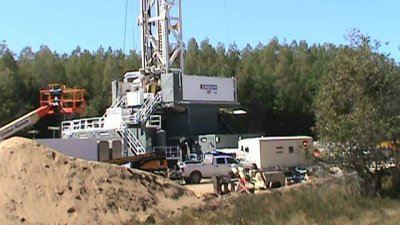
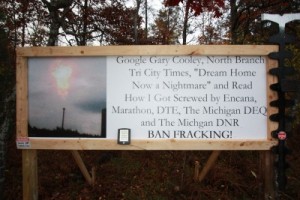
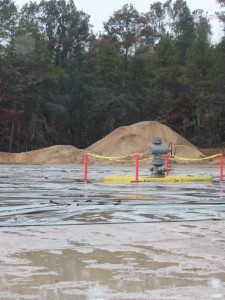

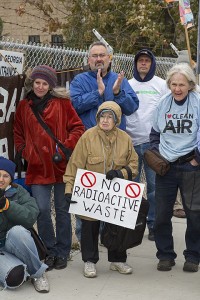

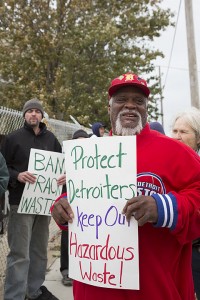
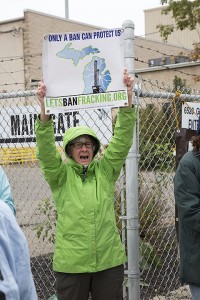
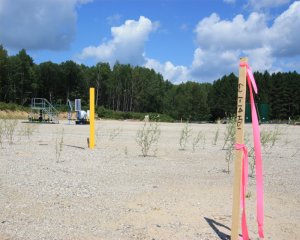
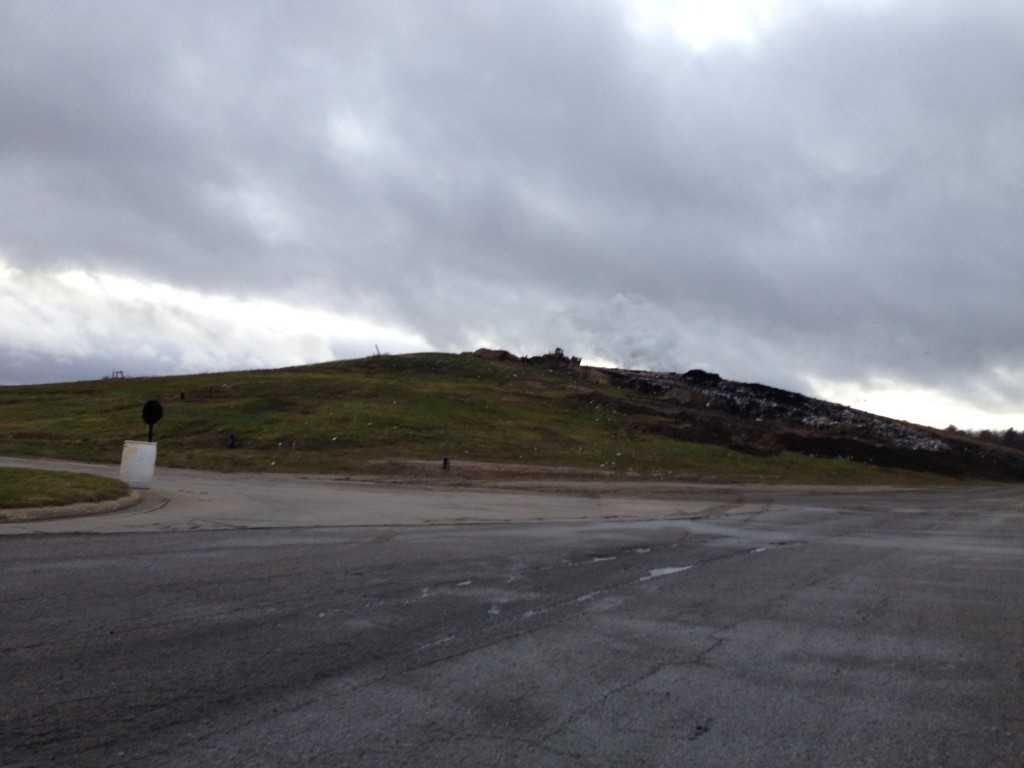
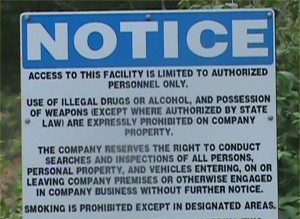
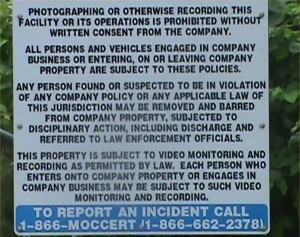
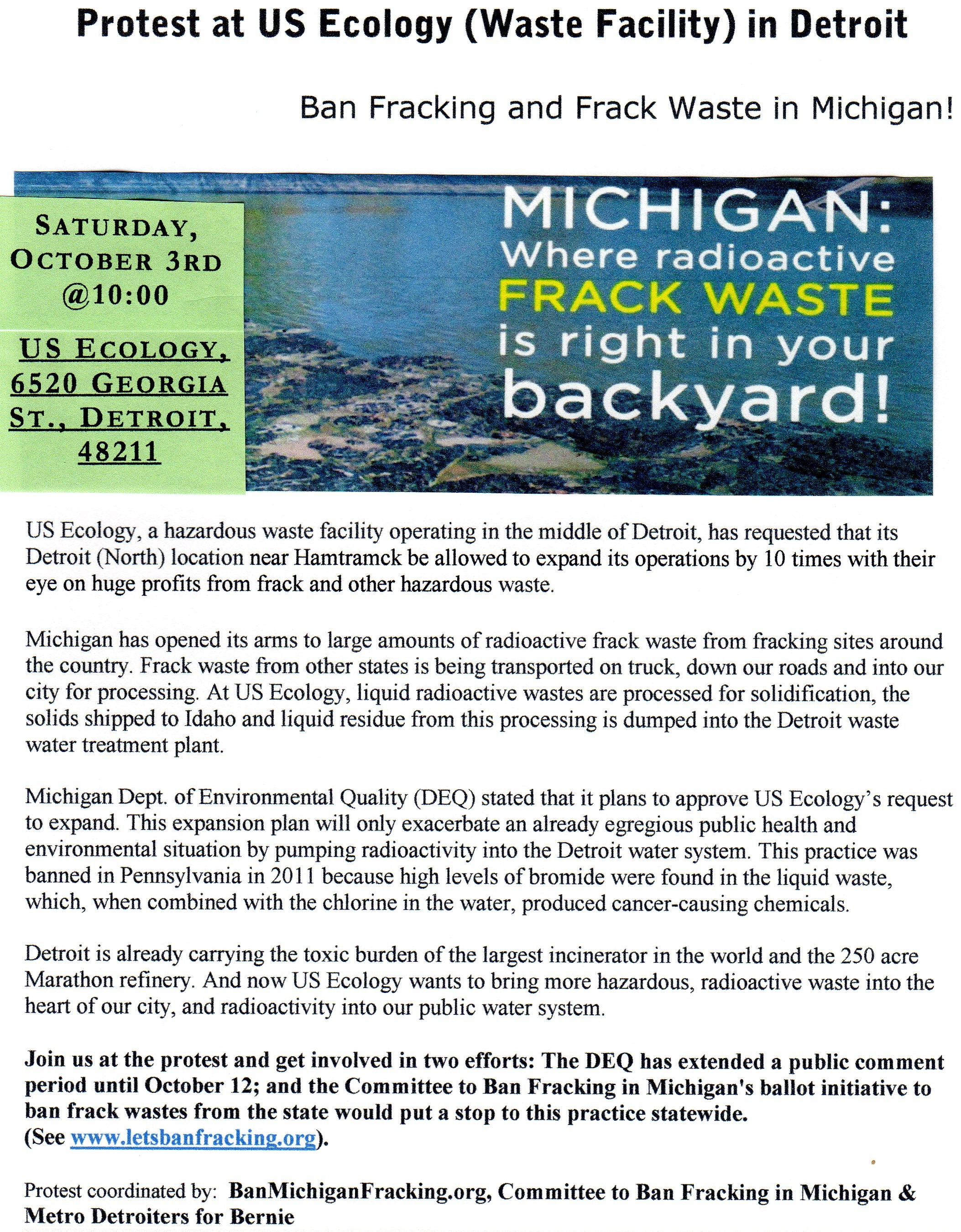
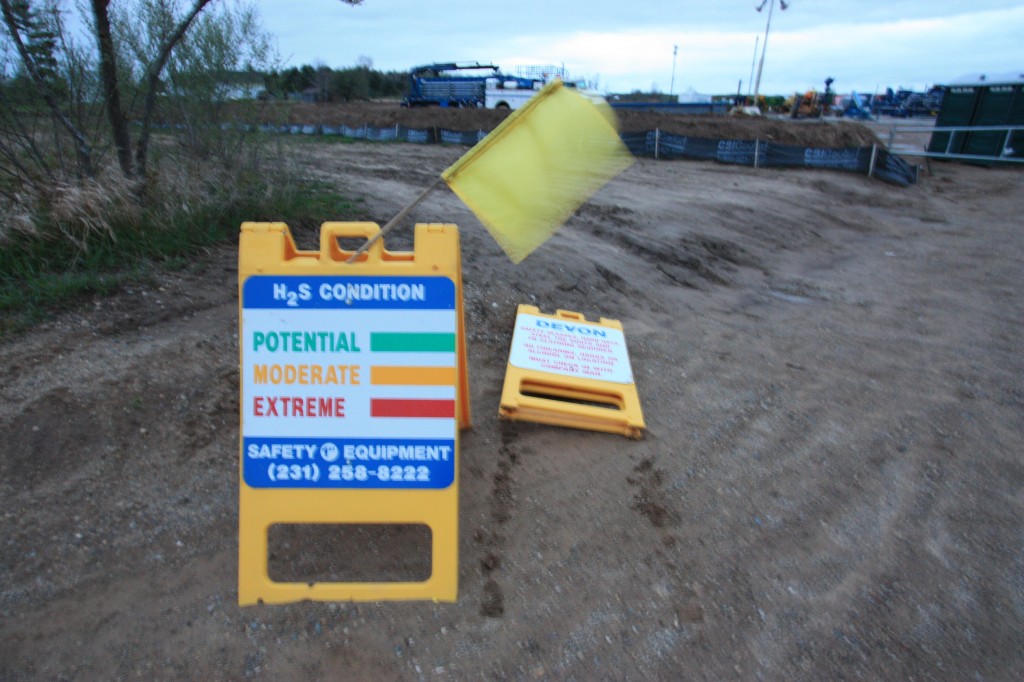
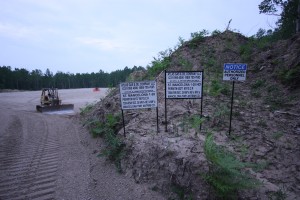
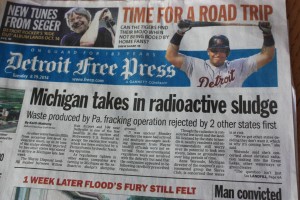 Wastewater, radioactivity: The new rules have no requirement for geochemical analysis of flowback and produced water, particularly from underground radioactive shale rock typically associated with shale gas.
Wastewater, radioactivity: The new rules have no requirement for geochemical analysis of flowback and produced water, particularly from underground radioactive shale rock typically associated with shale gas.